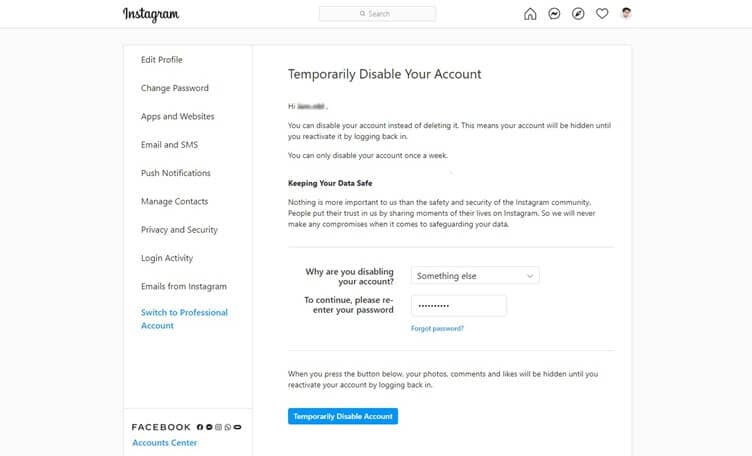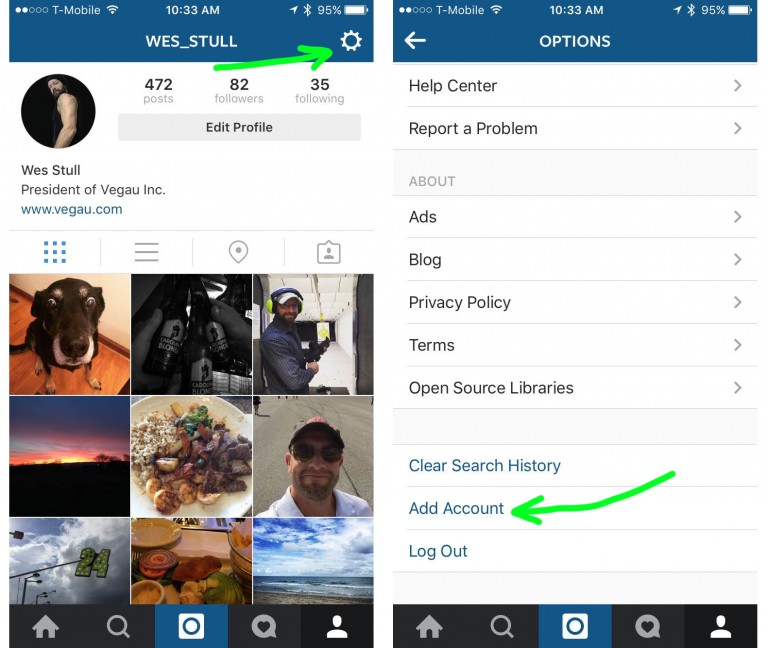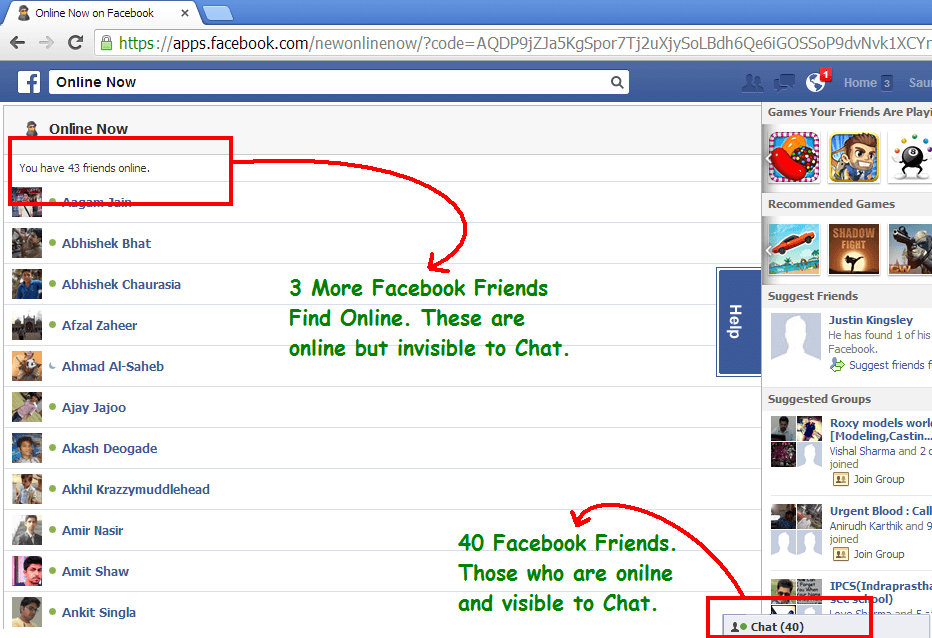How to make app like instagram android
How To Make An App Like Instagram: [2022 Edition]
33 min read
Over a billion people use Instagram every month.
Video and photo-sharing applications are gaining traction today. And Instagram leads this group of social media platforms.
You’ve probably wondered what it owed its success to and how to make an app like Instagram.
In this guide, we’ve answered all your questions. You’ll learn how to create an app like Instagram and repeat its success.
Here is what’s hidden inside this guide:
- what is the secret of Instagram’s success
- how to make an app like Instagram
- how much does it cost to build an app like Instagram
- KPIs for a photo-sharing app like Instagram
Let’s dive right into the article and learn how to build an app like Instagram in 2022.
Kevin Systrom and Mike Krieger are who you need to say thank you for the creation of the most popular social media platform in the world. In 2022, the company’s worth is already over $110 billion. The social media platform is projected to reach over $40 million in annual ad sales by 2023.
chart created with amCharts | amChartsAt the start of Instagram’s history, it was named Burbn, a solution that combined features of a check-in app and an online social game. But its founders didn’t stop there. They went further and decided to create a photo-sharing app and combine it with photo editing features. Before then, such solutions existed, but only separately.
The combination of photo sharing and photo editing features was explosive. It became Instagram’s Unique Selling Proposition (USP).
Thanks to the prototype, founders raised $500,000 from first investors. Two months after its release to the market, the platform gained over a million active users.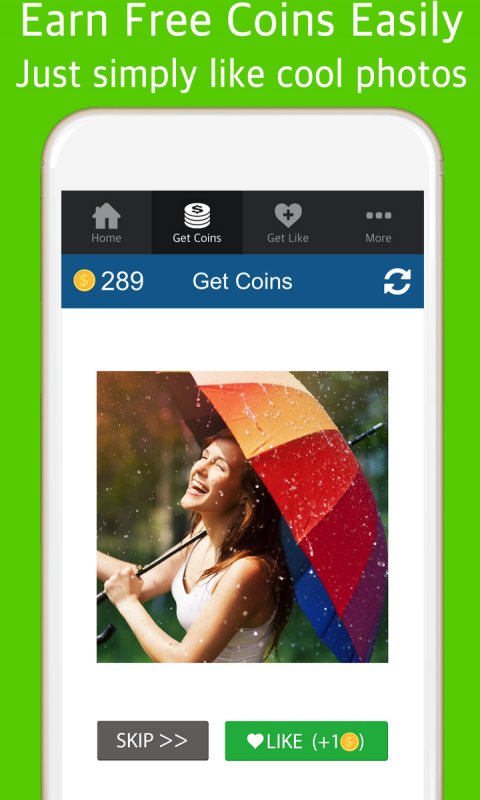
In 2012, Facebook bought out Instagram for over $1 billion, and in 2013 the photo-sharing application gained its first 100 million monthly active users.
So, what stands behind the popularity of Instagram?
Instagram is a successful social media marketing tool because of its extensive and growing user base. There are a few factors that ensure its never-stopping popularity:
- First of all, the app’s creators came up with a really unique app idea at the time that wowed users.
- At first, they didn’t invest all the money into creating a new platform. They created a photo-sharing app for iOS only and tested it for two years. Only after they witnessed huge success did they move to the development of Android and web versions.
- They stayed flexible enough and quickly understood when to change the first app ideas and which direction to move.
- The company knows both how to get new users and retain existing ones.
 It’s one of the platforms whose popularity hasn’t wavered for over 10 years now.
It’s one of the platforms whose popularity hasn’t wavered for over 10 years now.
Instagram is an app with a pretty simple app idea. The company has stuck to it throughout the years. However, it successfully added new features that the audience loved.
What is Instagram in the Nutshell?chart created with amCharts | amChartsInstagram had successfully transformed from a photo-sharing application into one of the most successful social media platforms in a couple of years. Today, it’s much more than that. Let’s take a look at Instagram as a photo-sharing app, photo-editing solution, messenger, and eCommerce portal.
- Instagram as a photo-sharing app
The key feature of Instagram is photo sharing. Considering how to make an app like Instagram, you can limit its features to just this one feature. It’s possible to make an app like Instagram, starting with an MVP and then moving on by adding extra features.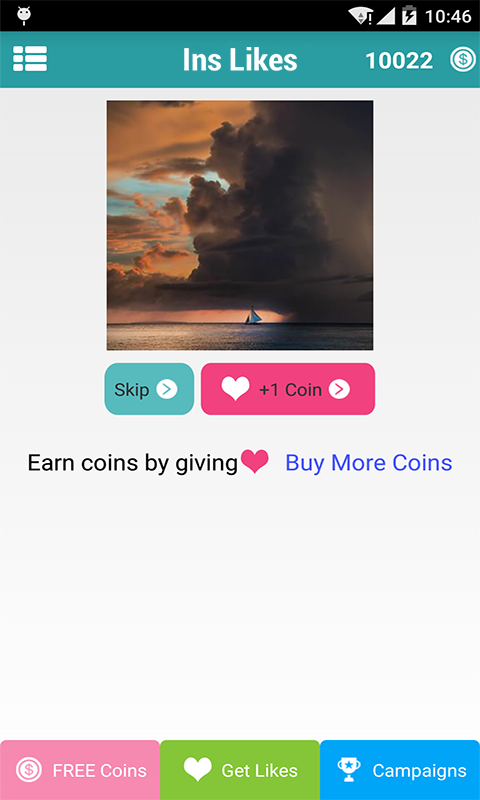
The minimal feature set for such an app would be:
- User profile
- Uploading and deleting photos
- Geolocation
- Comments
- User tagging
- Integration with 3rd party social media
- Instagram as a photo-editing app
As mentioned above, Instagram combines both photo-sharing and photo-editing features. Users can apply filters, change the size of a photo, adjust brightness, warmth, add text, markers, and so on. Users can create catching content right in one single application.
The MVP feature set for such an app would be:
- User profile
- Basic photo-editing features (cropping, resizing, filters, etc.)
- Advanced features (adding text, frames, stickers, etc.)
- Instagram as a messenger app
Today, it’s difficult to imagine Instagram without the built-in messenger. This feature allows users to interact and share highlights, reactions, and messages.
This feature allows users to interact and share highlights, reactions, and messages.
Must-have features would be
- User profile
- Text and audio chats
- Ability to delete and send messages
- Feature for blocking users
- Instagram as an eCommerce platform
Instagram never stands still. From a photo-sharing app, it grew into something more. Today, businesses use Instagram as an eCommerce platform. The number of business accounts is around 25 million. Retailers can post products, promote and advertise them, and sell and interact with buyers.
The minimal number of features would be:
- Business profiles
- Product listings
- Targeted ads
- Paid posts
- eCommerce analytics tools
Despite more than 10 years of history, Instagram continues to evolve. The list of the most recent features includes Instagram Reels, IGTV, and shoppable posts.
The list of the most recent features includes Instagram Reels, IGTV, and shoppable posts.
This part of the article covers the key aspects to consider to make an app like Instagram.
The process of app development doesn’t start with coding. It starts much earlier with market exploration and competitors’ analysis.
Here is how to make an app like Instagram in 10 steps:
- Conduct market research
- Make competitor analysis
- Validate an app idea
- Create app design
- Choose a technology stack
- Decide on features
- Choose monetization strategy
- App development
- Deployment, launch, and ongoing development
- Marketing and promotion
Let’s review each of the steps to make an app like Instagram in more detail.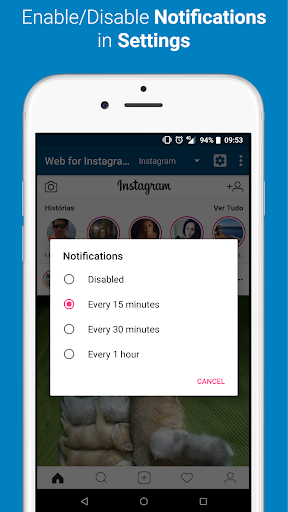
1. Conduct Market Research
It’s impossible to decide how to make an app like Instagram without understanding the current situation on the market of photo-sharing and social media applications. The first and most logical step is to conduct market research.
The key purpose of this step is to analyze the market of similar applications. As you are working on your research, try to answer the following questions, which will help you make an app like Instagram that users will love:
- Where will you launch your application?
- What do users like and dislike?
- How do users interact with similar apps? Which features do they use the most?
- What are the demographics (female-male ratio, age, income, location, etc.)?
- Where will you launch your application?
Answers to these questions will help you answer the most critical question: Who is your target audience? After identifying it, you will understand how to make your app appealing to them.
2. Make Competitor Analysis
Competitive analysis of apps like Instagram will help you define the vision of your own project. You need to learn from your competitors; check their functionality, key strengths and weaknesses, and monetization methods.
During this stage, try to answer the following questions:
- What is the USP of competitive apps?
- What do users love about those apps the most?
- What features are competitors offering?
- How do competitors monetize their apps?
The key purpose of competitor analysis is to understand how you can stand out with your own app.
The table below lists the top 10 photo-sharing apps with key insights about them.
| Application | Details | Platforms | USP & Features | |
| | 1+ billion monthly active users (MAU) 500+ million daily active users (DAUs) | iOS, Android, Web | Photo & video sharing Photo & video editing IGTV, reels Photo filters | |
| | Retrica | 190+ filters available 250 million users Available in 102 countries | Android, iOS | Photo & video sharing Add filters to photos made with the front camera before taking a shot Make GIFs from collages and videos |
| | Flickr | 60+ million monthly users 100+ registered photographers 25+ million photos uploaded every day 10+ billion photos shared since launch Available in 63 countries | iOS, Android, Web | Photo sharing Creation of photo albums in the cloud Professional photo editing tools Private sharing with a close circle |
| | Hipstamatic | Not a social network 4+ million users | iOS | A large suite of tools for creating vintage photos Add filters to photos before taking a shot |
| | 459 million MAU Users watch around 1 billion videos every day | iOS, Android, Web | Share & view images Segregation by topics Save or repin pins | |
| | Yummi | Available in 100+ countries 50+ restaurants listed | iOS, Android | Photos sharing platform dedicated to food and restaurants Restaurant recommendations Friends recommendations Food diary |
| | VSCO | 4 million paying users 30 million registered users | iOS, Android | Photo sharing app without social media experience Advanced photo-editing capabilities Ability to share photos in VSCO or on other social media platforms |
| | Snapchat | 280 million of DAU 5+ billion snaps created every day 18+ billion daily snaps views | iOS, Android | Auto-disappearing shares (snaps) Group stories Augmented Reality features |
| | Dispo | Raised $20 million in investment Company value of $200 million | iOS | Next-day automatic delayed posting of photos Only via-invite joining No photo editing, no hashtags |
| | Unsplash | 3. 3.6+ billion photo downloads 264+ contributors | Web | Photo-sharing features Free downloading of images Daily hand-selected photos |
3. Validate Instagram-Like App Idea
Creating new applications is a risky venture as you never know how the target audience will react to it.
One of the ways to ensure its success is to ask your potential users how to make an app like Instagram that they will love to use. The choice of the tool is up to you: you can create polls, get in touch with the target audience and ask them questions directly. After you get answers, it will be easier to finalize the USP of your photo-sharing app and create a business model canvas.
A business model canvas usually contains nine blocks, each dedicated to one aspect of your application idea:
- Audience segment
- The main problem that users are dealing with
- Unique selling proposition
- Your solution
- The advantage of your app
- Cost
- Key performance indicators
- Revenue channels
- Advertising channels
Below you can find a draft of such a business model canvas with a short description for each of the blocks. Filling out these blocks will help you better understand how to make an app like Instagram that will meet both customer expectations and your business requirements.
Filling out these blocks will help you better understand how to make an app like Instagram that will meet both customer expectations and your business requirements.
4․ Create Photo Sharing App Design
In the era where users ‘buy’ with their eyes, you can’t make the mistake of underestimating the importance of app design.
You should take care of two parts of app design:
- User experience (UX) – defines user flows, how users interact with your application and move through app screens.
- User interface (UI) – the visual representation of your app that should support the app’s functionality.
Study the latest trends in app design, explore the latest innovations and consider using them for your application. Today, no one wants to interact with an app with an outdated and too complicated design.
When designing for iOS and Android, make sure you are familiar with and follow Human Interface Guidelines by Apple and Material Design Guidelines by Google.
5. Choose the Right Technology Stack
You can’t create a photo-sharing app without knowing the tools that keep Instagram running.
So, the Instagram technology stack includes the following technologies:
- Python/Django on the server-side
- JavaScript and React.js for front-end development
- React Native for Android and iOS native applications
- PostgreSQL for database
- Amazon S3, Amazon EBS, Amazon EC2 for cloud computing
Instagram app is designed to handle huge amounts of data while providing high performance.
As you decide how to make an app like Instagram, you will need to decide on its technology stack. Every project is unique, and it doesn’t mean that the Instagram tech stack will be sufficient for your application. We can offer native app development or Flutter app development based on your business needs.
6. Decide on Features
Instagram was introduced as a photo-sharing application and had a basic set of features.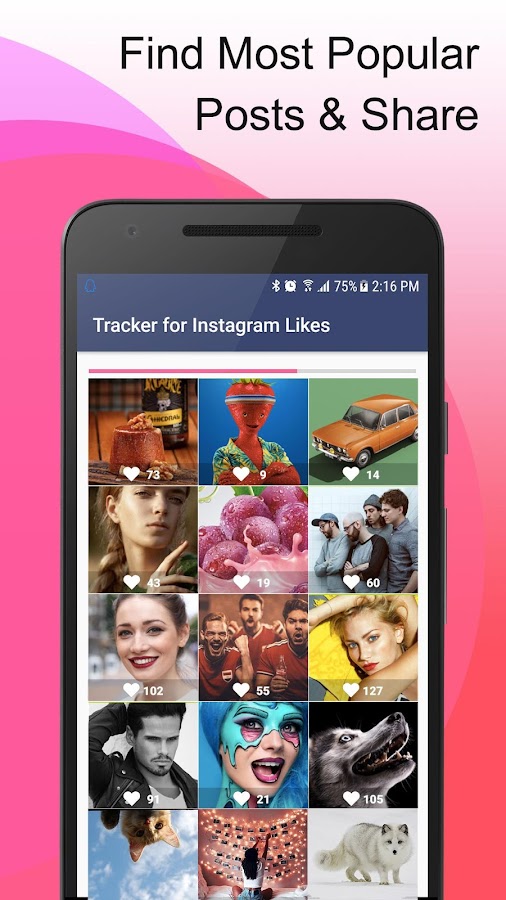 After successfully testing the app idea and seeing positive feedback from the audience, its creators added more advanced functionality.
After successfully testing the app idea and seeing positive feedback from the audience, its creators added more advanced functionality.
Let’s review how to make an app like Instagram by analyzing which features you can add to your application – both basic features needed for MVP and advanced functionality required for further product implementations.
- Registration & authorization
The first step of interaction with an app like Instagram is new account registration. When creating a photo-sharing app, add multiple options for user sign-ups and sign-ins: an email account, phone number, Google, and the most popular social media platforms.
The worst thing you can do is force users to fill out a form manually. The best thing to do is simplify the process and bring it down to a few seconds.
It’s also possible to make your app registration-free but only for some features. For example, you may allow users to watch some content without registration, but further interaction with it will require them to sign up.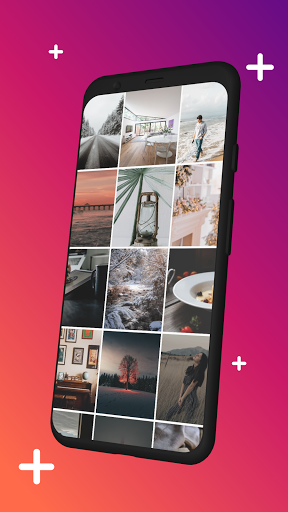
- Profile editing
Exploring how to make an app like Instagram, don’t forget to add the profile editing capabilities to the list of features. Users should be able to log into their account and change personal information, such as name, phone number, email address, profile picture, profile description, etc.
For this feature to work, you will need to create an interaction between the client and server-side of your application.
- Uploading photos & videos
Uploading photos and videos is the top priority feature for Instagram development. There are different ways of how you can implement such a feature. Think about adding the ability to preview content, upload existing photos and videos from a phone, or take photos with the camera right inside the app
- Photo editing & management
Photo uploading combined with robust photo editing features is one of the reasons why Instagram became popular in the first place.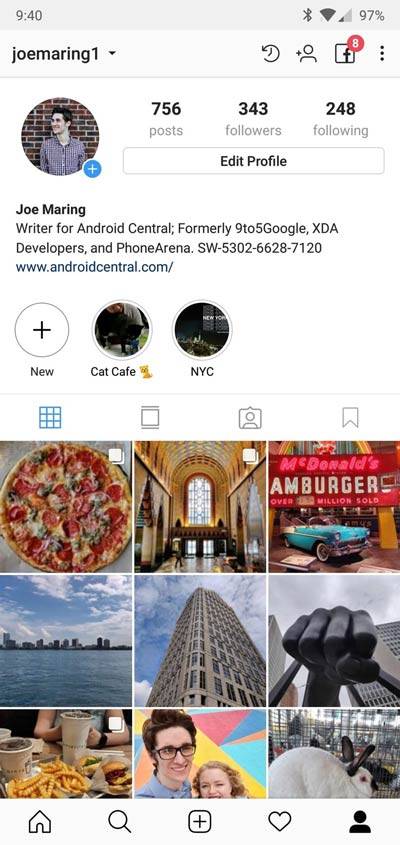 It is a must-have feature for Instagram-like applications. You can approach their creation in different ways. For example, you can add only some basic capabilities at the start, like adding stickers and text to the uploaded photos. If you want to know how to make an app like Instagram that users will fall in love with right away, consider developing more advanced functionality, such as the ability to adjust colors and tones, delete unnecessary objects, and so one right inside your application.
It is a must-have feature for Instagram-like applications. You can approach their creation in different ways. For example, you can add only some basic capabilities at the start, like adding stickers and text to the uploaded photos. If you want to know how to make an app like Instagram that users will fall in love with right away, consider developing more advanced functionality, such as the ability to adjust colors and tones, delete unnecessary objects, and so one right inside your application.
- Linking with social networks
Creating a connection with other social media networks will help users stay in touch with their friends and share content throughout all the networks. It’s a nice-to-have feature that you can also consider adding to create a photo-sharing app.
- Geo-location
Instagram, first of all, is a social media platform. Users don’t only share their photos; they share their favorite places, best vacation spots, etc. Adding GPS is an essential step to make your application more valuable and exciting for users.
Adding GPS is an essential step to make your application more valuable and exciting for users.
When developing the feature, you need to add auto geolocation detection and the function to set up the location manually for situations and locations when the GPS signal is weak.
- Search
You can’t make an app like Instagram without providing users with the ability to search for other users, groups, content, tagged photos, the latest news, and so on.
- Messaging and commenting
Real-time messaging is one of the features that makes Instagram tick. Users need to have the ability to communicate with their friends via direct messages and comments on each other’s photos.
- Push notifications
You might want to leave this feature for further application improvements. Adding the ability for the app to notify users when they receive likes, comments, or new messaging will incentify them to interact with your app more.
- Instagram feed
Instagram wouldn’t be itself without its feed with photos. It is a must-have feature that allows users to view all the content in a profile without opening each photo.
- App adjustments
Depending on your business goals, you might need to launch your app in different countries. Thus, users would need to have the ability to manually adjust the app’s settings, such as language. Also, they should also have the ability to enable and disable push notifications, configure the account’s privacy settings, and so on.
- Stories
This is one of the key features that Instagram has today. Stories allow users to share some interesting moments from their lives that you don’t want to add to your feed. Stories automatically disappear after 24 hours if users don’t save them.
Stores are photos and videos with texts, stickers, filters, etc. Between 2017 and 2018, Instagram took this feature and moved it to the next level. Today, stories have a huge number of additional features, such as the ability to make boomerangs, superzooms, add question stickers, create story highlights, share shoppable posts, add hashtags and nametags, and much more.
Instagram serves as a great example of fast-growing and innovative apps. If you wonder how to make an app like Instagram, study its history and how it evolved throughout the years. You would be surprised to see how swiftly Instagram adapts to new realities and how it is the key trendsetter in the industry of social media apps.
7. Choose Instagram Monetization Strategy
Instagram hadn’t always been on the list of the Fortune 500 companies. In fact, during the first two years of its existence, Instagram didn’t even have a monetization strategy.
The first monetization capabilities were added after Facebook bought the company. What started as a sponsored posts feature later turned into a full-fledged advertisement system. Today, users can create a feed, carousel, story, and video ads.
So, how do apps like Instagram make money? Below you can find an overview of the key principles of its monetization strategy.
- Sponsored posts
Instagram generates the majority of revenue from sponsored posts. Sponsored posts are like ordinary post that contains a CTA button.
- Carousel ads
Carousel ads are just like posts but contain several images. Such carousels are great when advertisements want to tell a story with their posts.
- Stories
Ads in stories are not the invention of Instagram. The company adopted the idea from Snapchat showing sponsored stories while users are watching the stories posted by profiles they are following.
- Social eCommerce
This is one of the recent features that allows users to buy products by following links in Instagram posts and stories. Social eCommerce is a relatively new niche but has vast potential, so it might be good to consider such functionality for your future application.
| Learn more about creating mobile selling apps in our extensive guide: How to Make Online Selling App: Tech & Business Details, Technologies, & Processes [2021] |
- Facebook ads
Facebook ads are a part of the Instagram revenue model. Advertisers can place an ad on Instagram through Facebook, even if they don’t have an Instagram account.
There are numerous ways to create a photo-sharing app and make money from it. Just stay creative and find new monetization opportunities.
8. Start Instagram Development Process
After you’ve successfully identified features for the first version of your solution and chosen the technology stack, you can start the development process.
At first, you might want to start building an app like Instagram for iOS or Android only. During the research, identify what type of device is most popular among your target audience.
The development stage is usually divided into several phases:
- Coding – the creation of the app’s codebase, integration with APIs, SDKs, and third-party solutions.
- QA & testing – application testing to identify and solve any bugs.
- Deployment – release of the developed app to the market.
9. Deployment, Launch, & Ongoing Development
When your app is ready, it’s time to launch it to the market. Remember that the development process stops with this step. The key secret of successful applications is content improvements.
Just take a look at Instagram. If its creators stuck to the app’s first version, we wouldn’t have had such an app today.
Marketing & Promotion
The marketing strategy for the app’s promotion isn’t created in a single day. You should start working on it long before you launch the version of the app to the market – while your app is still in the development phase.
There are multiple marketing channels that you can use:
- Paid ads
- SEO, and content marketing
- Social media marketing
- Email marketing
- Influencer marketing
- Participation in events
The main goal of a marketing strategy is to put your app in front of potential customers and make them want to try it. Analysis of results provides valuable insights into how an app is performing. Feedback from users is the most critical data you can acquire and use for further app improvements. It’s the only way to create a high-in-demand photo-sharing application, even if the final solution will be very different from your first concept.
How Much Does It Cost to Make an App Like Instagram?The cost to build an app like Instagram can be very different depending on the complexity of the app, the number of features, and who will develop it.
Usually, the development of a photo-sharing app ranges between $50,000-$250,000. The final cost will depend on the number of custom features you need to implement, UX and UI design, and where you outsource app development.
For example, the cost for app development services is around $100 per hour in the USA. The same services in Europe cost around $35 per hour, while you get the same quality and level of technical expertise.
To calculate the final cost, use the formula presented below.
If you need more detailed estimates, check the table below with an approximate time calculation to create every major feature.
| Feature | iOS/Android | Backend |
| Authorization (social network) | 15-25 | 10-20 |
| Authorization (email) | 40-55 | 15-25 |
| Profile | 15-25 | 5-10 |
| Post creation | 40-60 | 30-65 |
| Feed | 40-60 | 25-40 |
| Image customization | 35-100 | – |
| Geolocation | 15-35 | 15-25 |
| Social features | 10-20 | 10-20 |
| Notifications (basic) | 10-20 | 15-35 |
| Search | 25-35 | 50-80 |
| Direct messaging | 40-85 | 40-85 |
| Total (hours) | 285-520 | 224-405 |
The design of a photo-sharing application will also impact the final cost:
- UX will take around 50-100 hours
- UI will take around 50-80 hours
Additionally, you might need to create a logo and some custom images. Such works can add up to 50 hours to the development cost.
Here is a more helicopter-view representation of Instagram app development cost.
| Dev hours | iOS | Android | Hybrid | |
| Backend | 400 | $14,000 | $12,000 | $16,000 |
| Development | 1800 | $63,000 | $54,000 | $117,000 |
| Design/UX | 100 | $3,500 | $3,000 | $6,500 |
| Web/desktop | 1000 | $35,000 | $35,000 | $35,000 |
| QA/PM | 100 | $3,500 | $3,000 | $6,500 |
| Total cost | 3400 | $119,000 | $107,000 | $181,000 |
How to Find the Best-fitting Instagram KPIs
As mentioned before, you will need to measure how your app performs after launch. During the development, you need to keep in mind the Key Performance Indicators (KPI) for an app like Instagram. The success factors in the case with such apps will be users, engagement, and retention.
- Users
The number of active users is the best measurement of an app’s success. If the number is steadily growing, it’s the main indicator that you are taking an app in the right direction.
Social media marketing, influencer marketing, and paid ads are effective strategies to get early users and steadily grow the user base throughout all stages of the app’s lifecycle.
- Engagement
Impossible to measure the success of an app just on the number of users. There are other factors to consider, such as the time they usually spend interacting with an app, how many times they open the app during a day, the number of photos they upload, shared messages, and likes. All these factors show that users are actively involved with your app and continue to use it days, months, or even years after installation,
- Retention
Getting users is the first part of the goal. Keeping them is an entirely different task.
You need to be good at keeping users engaged with your app. One of the ways to do that is to use push notifications. That’s why we usually recommend adding such functionality to our client’s applications. However, before sending them right and left, study your app’s audience and identify timeslots for users to interact with the app.
Delighting customers with innovative features is also one of the ways to make them use your app. It’s also possible to organize different contests and allow users to monetize the shared content to keep their devotion.
Delighting customers with innovative features is also one of the ways to make them use your app. It’s also possible to organize different contests and allow users to monetize the shared content to keep their devotion.
Make an App Like Instagram in 2022: Final ThoughtsNow that you know how to make an app like Instagram, it’s time to sum up everything said above.
The plan to make an app like Instagram should include the following steps:
- Market research to identify your target audience
- Competitor analysis to evaluate the competition
- App idea validation to finalize your app idea
- Design to create a visual representation of your app
- Technology stack to implement all features
- Features that will form the basis of your app
- Monetization strategy to decide on how to make money with your app
- Development process to create the code base of the solution
- Ongoing development to quickly adapt to the latest changes and trends
- Marketing and promotion to get and increase the user base
How does Instagram make money?
Instagram hasn’t always been a successful business project. It didn’t make money during the first two years of its history. Today, the platform has a robust monetization strategy that allowed it to secure a place on the list of the Fortune 500 companies
Instagram makes money with sponsored posts, carousel, feed, story, and video ads.
How much does it cost to make an app like Instagram?
The average cost of creating an app like Instagram varies from $50,000 to $300,000+. The final cost depends on several factors, such as the complexity of custom features, integration of third-party solutions, and the place you outsource app development.
What is Instagram’s technology stack?
Instagram uses Python/Django on the server-side, JavaScript and React.js for front-end development, React Native for iOS and Android app development, PostgreSQL for databases, Amazon S3, Amazon EBS, Amazon EC2 for cloud computing.
How can I make an app like Instagram?
To create a photo-sharing app like Instagram, you will need to follow a 10-step process: start with conducting market research and competitor analysis, validate your app idea, create the app’s design, decide on the technology stack and features, choose the best-fitting monetization strategy, start the development process, launch the app to the market, work on ongoing development, and promote the app among potential users.
What are the competitors of Instagram?
There are a lot of apps like Instagram on the market, including Retrica, VSCO, Snapchat, Flickr, Hipstamatic, Pinterest, and many others. Even though TikTok has a different format, it’s also considered as one of the main rivals of Instagram that erode Instagram’s standing as the leading social media platform in the world.
Relative Topics
- Mobile Application Development
- nft marketplace development
How to Create an NFT Marketplace: 10-Step Development Guide
Must-Have Uber App Features: Guide to Building a Ridesharing App
- banking app development
- Mobile Application Development
How to Create a Banking App: Ultimate Guide from Hands-On Experts [2022]
- Mobile Application Development
- taxi app development
Taxi App Development: Extensive Guide with All Steps Covered
How to Create a voice translation app: Features, Cost & Tech Details
- Mobile Application Development
How to Make an App Like Uber: Features and Tech Components [2022]
The ridesharing market has witnessed a huge surge in the last few years. Uber is the most vivid example of a taxi-hailing company that turned into a multi-billion business. In 2019 alone, the company’s global net revenue amounted to 14.1 billion U.S dollars.
Subscribe to Our Newsletter
You will receive new articles right to your inbox
How To Make An App Like Instagram For Free
Instagram began as Burbn in 2010 by Kevin Systrom and Mike Krieger. Ten years of developing and tweaking to meet users’ expectations, now have over 1 billion active users, with 500 million daily users.
Additionally, compared to other platforms like Facebook, the Instagram network comprises young users, with the majority being between years 25 and 34.
Maybe you have been thinking about how to make an app like Instagram where you can share photos. Today, you will learn how to create a social media app like Instagram from scratch without paying a dime for it.
What is an Instagram App?Instagram app has evolved over the years. Through the lens, now it’s more than a photo-sharing app but also an e-commerce platform and messenger. Social commerce is growing at an exponential growth with an estimation of $34.5 billion by 2021.
The new Instagram version gets designed for Direct Messages, Videos, and E-commerce. Here are some of the Instagram key features:
- Stories – A great feature that highlights a short 15-second video or photo that usually disappears after 24hours. It was launched in 2016 and now has over 500 million daily users. A third of IG stories are from businesses.
- DMs (Direct Message) – It’s used to send and receive messages both private and generic.
- IG TV (Instagram TV) – This vertical video sharing feature allows you to share video content up to 60 minutes in length.
- Explore page – The section gives you updates on new content or those accounts going viral.
- Shoppable posts – You can buy directly from Instagram newsfeed with a shopping button attached to a photo post.
Instagram has sponsored posts that appear on the newsfeed, and recently on IG stories. After you create an app like Instagram, you may want to monetize it. Here are some ways to do it;
- In-app purchases – You get to put a range of products up for sale on your own or enable users to post their products, and you receive a percentage of the sale.
- Offer special deals and promo codes to active users.
- Use sponsored advertisements where users and businesses can create profiles to promote their products.
When you decide to make an Instragam alternative, you want to stand out from the competition by considering some of these critical factors:
1. Number of active users
A photo-sharing app without users will not grow and scale. You need to figure out how to keep the number of active users engaged and growing.
Having high profile users like Instagram influencers who are active on your app is excellent. But how do you get them to use your Instagram alternative app?
Good marketing and PR programs can help you attract users. Invest in some of the communities you are targeting to get users.
2. User involvement and retention
After you get some users, how you retain them and build a loyal community?
- Provide high-quality editing tools for your audience to play with and continuously work on improving them.
- Send push notifications to remind them of any app updates; maybe they follow posts, new content, or engagements( likes, or comments) of their content occurs.
- Encourage monetization by users selling their products on the Instagram app. Let them have some ‘skin in the game.
’
You don’t want to build the next Instagram ( copy & paste), but a unique Instagram app focused on design, branding, and it’s differentiating factor.
Here are some development features you want to include from the start;
- Personalized feed
- Clear UX/UI design
- A well-function application
- Intuitive- user navigation
- Impressive and eye-catching graphics like logo
Features every app like Instagram should have:
- Photo customization ( editing & filtering features)
- Messenger for both text and photo.
- Ability to post photos( uploading, add hashtags, tag other users).
- Timeline for comments likes, and follow.
- Push notifications and notifications.
- Feature to search for the username, hashtags, names, etc.
- Authorization to sign up and create a new profile.
- Ability to edit the profile.
- Location tagging where the photo was taken
- Write down the objective.
As we mentioned above, the original Instagram app has evolved to be more than just a photo-sharing app. Before you begin development, define the objective of your Instagram-like app. If you think of adding extra features( e-commerce, video) in the future, write them down.
- Do comprehensive market research.
The competition is asleep at the wheel. You need to do your market research well to understand how your app like Instagram will differentiate in the market. Which version will be the best to start with? Android or IOS version? For some context, the Android version has an 87% market share, according to Statista.
- Decide on the features for your MVP.
Your minimum viable product needs to have the essential features you aim to build your Instagram app upon.
- Hire the right development team.
You may not have programming skills like most people. But to bring your app to life, you need these skills. In your team, you will need people skilled in:
- App development
- UI/ UX design
- Project Management
- Digital Marketing
5. Promoting your Instagram App
Here the digital marketing specialist comes in handy to help you attract users. You need to hire the most qualified marketer to succeed. You can also use referrals and special deals to attract new users by using the existing users.
How Much Does it Cost to Make an App Like Instagram?The cost depends on what kind of Instagram app you want to build, and it’s functionality. On average it costs between $50,000 to $60,000
To hire a UI/UX designer alone on Upwork it will cost up to $150 per hour. Imagine if the task takes weeks.
Although you might decide to teach yourself to code the Instagram app from scratch, the learning curve is quite steep. The number of hours you will dedicate to mastering programming languages like Java, Javascript necessary for the app’s coding is immense.
Without a background in coding, you can make an app like Instagram for android for free.
A free app builder by AppsGeyser enables you to create an android Instagram app from your Instagram account profile link for free in 5 minutes or less. With AppsGeyser’s free app creator template, you get to make an app like Instagram wit apk file features like;
- Push notifications;
- Social Media tabs;
- Monetization;
- Any URL support.
Here are the simple steps to make your social media app like Instagram for free with AppsGeyser.
- Copy and paste your Instagram URL;
- Add other social media tabs;
- Name your app;
- Choose or upload an icon;
- Use the keywords in the name and description to tell about features;
- Localize the app into your home language;
- Preview your website app before building an apk file.
To create an app like Instagram needs more than a plan of action but also resources. The cost will vary depending on the functionality of your Instagram app.
Make An App Like Instagram for FREE
Frequently Asked QuestionsHow do you create an app like Instagram for free?
1. Open AppsGeyser.com;
2. Choose an Website template;
3. Enter Instagram or its alternative link;
4. Name the app;
5. Upload the icon;
6. Click the ‘Create‘ button. Your Instagram app is ready.
Can I create my own app for free?
With AppsGeyser, you can create your Instagram app for the android version for free in 5 minutes or less.
Can I make an app like Instagram?
To make an app like Instagram, you first need a minimum viable product with basic features of the Instagram app and get a limited number of users to test with it. You then use the feedback to tweak and develop your Instagram app further. But with AppGeyser, you need features for your Instagram done for you for free. All you need is to follow a few steps, and your Instagram app for android is ready in minutes.
Make An App Like Instagram for FREE
How to replace Instagram*: 6 apps for Android and iPhone
March 14How to liveiOS
These programs duplicate the functions of Instagram* to some extent. And some even offer their own unique features.
Share
0On March 14, Instagram* was finally blocked throughout Russia. If you want to continue sharing your photos and videos somewhere, you can try switching to alternative services. Here are five sites.
1.VSCO
Russian : supported.
The service positions itself as a space for self-expression with a large community of creative people. In the application, any user can share pictures and short videos, as well as follow the publications of other participants.
VSCO features a powerful photo editor with lots of filters and a magic wand that enhances images in one click. Some of the tools are available only to paid subscribers.
Download
Price: Free
Download
Price: Free
A popular messenger in the West with an emphasis on sharing stories — disappearing photo or video messages. It was Snapchat that set the fashion for them, after which it was picked up by Instagram *, VKontakte and other well-known services.
In Snapchat, you can take photos, record videos, add text and pictures, and then send it all to selected friends or share it with everyone nearby.
Download
Price: Free
Download
Price: Free
Professional photographers form the backbone of this social service. EyeEm is a platform with which it is convenient to look for sources of inspiration and promote your work.
The service allows you to edit photos, apply filters to them and publish photos to a wide audience. You can also list your photos for sale in the built-in store and submit them to competitions that are regularly held in the community.
Download
Price: Free
Download
Price: Free
4. Flickr
Russian : Not supported.
Flickr is a very old social network for amateur and professional photographers. Each user can post up to 1,000 photos for free. When this limit is reached, you will have to delete something or switch to a paid plan.
With Flickr, you can share your photos in thematic groups and be inspired by millions of other people's work. Pictures are complemented by the characteristics of the camera on which they were taken. There is a built-in image editor with many settings and filters.
Download
Price: Free
Download
Price: Free
The Tumblr blogging platform is most often used to create and share videos and GIFs, but nothing prevents you from posting your pictures there or connecting with loved ones.
Users can subscribe to friends' updates and repost their content to their accounts or other services. In addition to graphic posts, Tumblr allows you to publish text, audio and other materials - there are many possibilities.
Download
Price: Free
Download
Price: Free
6. 500px
Russian language : Partially supported.
This is one of the main social networks for beginners and practicing photographers. Any user can publish there, but still, 500px is not suitable for simple communication with friends and personal blogging.
Pay attention to this service for those who want to develop as a photographer, license their pictures and participate in various competitions.
Download
Price: Free
Download
Price: Free
Read also 🧐
- 18 extensions for secure and private browsing in Chrome
- 0122
- 10 paid VPN services with great rates
*Activities of Meta Platforms Inc. and its social networks Facebook and Instagram are prohibited in the territory of the Russian Federation.
Creating applications without code: how to make your own mobile application for Android or iOS
Creating applications if you don't know how to program is quite possible. You just need to understand what you are doing the application for, choose the appropriate constructor and work step by step.
This article explains how to create an application: when it is worth doing it yourself and how to get a viable business tool in the end. At the end is a selection of app builders with descriptions and prices.
- Why create a mobile app
- When you can create an application yourself
- Ways to create applications
- Development with a programmer
- Zero-code app builders
- How to create a mobile application: work steps
- Training
- Development
- Launch and testing
- Promotion and support
- Services for creating mobile applications on Android and iOS
- draftbit
- Adalo
- Bravo Studio
- Kodika
- Mobincube
- AppsBuilder
- AppsGlobal
- Alternative to mobile applications - chatbot
- Building Apps: Things to Remember
Why create a mobile application
Every year more and more people use mobile phones instead of computers. At the same time, the number of installed applications and the time spent in them are growing - it is more convenient to go to the application on the phone, and not to the site.
The chart below shows how much time people spend on their phone - in the browser and in apps. Applications are confidently leading and, judging by the forecast, will continue to increase the gap.
Browser and application usage time on mobile phones. SourceAt the same time, people install quite a lot of different applications. According to the graph below, every fourth phone has more than 30 applications.
Number of applications on one phone. SourceWhen you can create an application yourself
You can create a small and simple application by yourself that will cover the needs of your existing customers. This will help build loyalty: you will show that the company is trying to become even more convenient.
For example, you have a pizzeria and many regular customers. You know that a lot more orders come through the site than through the phone. You make an application - it becomes easier for the client to buy pizza from you. In addition, you can send push notifications through the application: talk about promotions, inform about the readiness of the order.
In general, if there is a need that can be quickly closed by an application, it is worth creating it. Here are more examples. A news publication can make an application to make it convenient for subscribers to read the news. Medical clinic - so that customers can choose the right doctor and make an appointment. Company - so that employees have quick access to standards, rules and knowledge base.
But creating an application on your own for the promotion of the company is a bad idea. You need to very accurately guess the request of potential customers and make an application that will be seen, downloaded and not deleted after the first use. It is difficult and most likely will not justify the effort invested.
Ways to build applications
The classic way to develop is to hire programmers. But there is also an option when you create an application yourself, using special services. Let's consider both.
Development with a programmer
The method is suitable for teams that have a developer on staff with the relevant experience or money to hire one. It can be either an individual freelancer or an entire agency - the choice will depend on the complexity of the application and the size of the budget.
Before hiring an outside specialist, make sure of the experience - ask for examples of work. Ideally, these should be examples in your topic, such as shopping or booking tickets.
Zero-code application builders
For those who do not know how to program, there are services on the market for creating applications on their own - the so-called no-code or zero-code services. You will receive a selection of such services with a description and prices later in the article.
Zero-code services work on the principle of constructors: you assemble an application from the existing set of elements and functions, create your own design. Traditionally, there is a set of ready-made templates that you can adapt to your needs.
The functionality of these services directly depends on the tariff. On free or cheap, a minimum of functions is available. Most likely, to create a high-quality native application for iOS and Android, you will have to buy a more expensive tariff, but it can be cheaper than attracting a developer.
How to create a mobile application: stages of work
We conditionally divide the independent creation of an application into four stages:
- preparation,
- development,
- launch and testing,
- promotion and support.
Preparation
At the preparation stage, you need to decide for whom, why and how the application will be made. All this information needs to be collected in one document, which will be the fulcrum for all participants in the process.
- For whom. Determine the target audience - for whom we are creating the application.
- Why. We describe what problem the target audience has and how the application will solve it. From here, the conclusion is already - what is the benefit for the company from the application.
Understanding for whom and why you are making an application is a critical thing. Without understanding, there will be no real benefit, which means that the application will not be used.
- What others have. Competitive analysis is a mandatory stage of preparation. Analyze what similar mobile apps are on the market. Try the most popular ones: note what is convenient and inconvenient, what is missing and what are the interesting features. It's also helpful to look at the reviews. They can be found directly on the application page in the market or google.
- As . We are counting on the strength - it will be possible to make the application on our own or you need to contact the developer. If by ourselves - we choose the appropriate platform, the list will be further in the article.
- What's next . This is an optional step, but a useful one. Think about how the app will fit into your overall promotion ecosystem.
What chances does he have for development, will there be forces, time and money for support.
The result of the preparation: a fully prepared description of the future application with the target audience, functionality and business requirements.
Development
Focus on the target audience problem you identified in the previous step. Based on this, describe a list of basic functions. For example, for a clinic application, this could be:
- see catalog with cards of all specialists,
- make an appointment and leave feedback,
- find the price for the desired service,
- set a reminder to record or take medication.
Then assemble the functions into a common application script. For this, the storyframe method comes in handy: these are draft screens that your application will consist of. They contain nothing but text. Roughly speaking, this is a dialogue between the user and the application: the application offers - the user reacts - the application responds, and so on. You can collect them in services like miro, Figma, Sketch, or use any mind mapping tool from our selection.
For example, you are building an activity recommendation app. A person enters his height, weight and age there and gets the right number of steps or workouts. Then there will be something like this scenario:
- Greeting - tell what method you use to determine the activity and why it is needed.
- Data entry - we ask the user for his parameters.
- Results - counted number of steps/workouts for this user.
- Advanced Recommendations - Tips on how to start exercising more.
At the stage of storyframes, the logic emerges: how many screens will be needed, what they will be, what needs to be combined or divided, where just text is needed, and where an illustration is needed. And already on the basis of storyframes, you will build final screens of the application. You don’t have to change the logic on the go and make big changes.
What else to consider in order to create a good application:
- Onboarding. If something can be misunderstood, so be it. Explain to the user where he got to and how to use the application.
- Immediate response. Every interaction with the interface must receive a response. Change the color of the element when clicked, the appearance of a loading icon, a text hint - so that the user understands that his action worked.
- Less irritants. Make a minimalistic interface - it's better to add something later than to remove it. The simpler and clearer the application is, the higher its chance for a long life in the phone.
And ideally, the application should weigh a little, not be annoying with ads and notifications. The statistics below are the main reasons for deleting apps.
Top reasons why people delete apps from their phones. Source Development result: the first working version of the application.
Launch and testing
Before rolling out the application to the public, it must be tested and all found bugs and errors in the logic should be fixed. The easiest option is to install it on team phones and actively use it for at least a few days. It is best to involve a focus group - people from the outside who fit the description of the target audience and are still unfamiliar with the project.
Don't leave testing until the last minute. If serious problems are discovered, the release date will be pushed back, which can cost you time and money. It is better to take a few weeks for verification - let it go in a deep and calm mode, and you will definitely have time to debug.
Launch and testing result: beta version of the application, tested on a group of users.
Promotion and support
Ready tested application can be launched in promotion. If there is a direct download link, launch advertising campaigns with it. Offer the application to site visitors, announce its release in social networks, make mailings to the base of regular customers. Upload to the app store - Google Play or AppStore.
Advertising systems have special campaign formats for promoting mobile applications. I have collected for you links to information on such campaigns in different systems:
- Yandex,
- Google,
- Facebook.
The result of promotion and support: the application has entered the market, if necessary, you support and refine it.
Services for creating mobile applications on Android and iOS
As I said above, it is not necessary to know the code to create a mobile application. There are zero coding services in which you create applications according to visual logic - you assemble them from ready-made blocks, customize the appearance and functions.
What to consider when choosing a service:
- Language.
Most of the good services for creating applications are in English, there are very few Russian ones, but there are some in the selection.
- Interface and functionality. If there are any special requirements, then check their feasibility at the service selection stage. At the same time, look at the interface - can you work in this.
- Results format. This must be a ready-made package with application files (apk or aab for Android, ipa or pkg for iOS). Or the service itself will help you upload the application to the stores - this is an ideal option to avoid unnecessary complications.
I have collected services for you that allow you to create a mobile application and share the result - download ready-made packages, create a download link for users, or upload the application to the store. The price is for the rate at which you can get packages for downloading to stores or assistance with the download service.
Draftbit
Draftbit mobile app creation serviceLanguage: English
Platforms: Android, iOS
Tariff: $,449 per year, free to try.
A complete service with a nice design and intuitive interface. There are many elements and functions, you will have to spend a little time getting to know each other, but create a multifunctional application.
At the start, you will be prompted to set up an initial template: for example, whether your application will be filled with content or products, organized as a gallery, list or feed. Integrations are available - built-in and through the REST API, so you can connect data sources and other services to the application.
The service uses only open programming languages and libraries. This means that the developed application will entirely belong only to you, the service will not have any rights and licenses for it.
Adalo
Adalo mobile app creation serviceLanguage: English
Platforms: Android, iOS
Tariff: $50 per month, free to try.
There is an integration with Zapier, a service that allows you to connect your application with 1500 other services. For example, set up integration with Trello or SendPulse, your CRM or payment system. It is also possible to connect data sources.
The ability to publish to app stores is built in - Adalo has detailed step-by-step instructions for this.
Bravo Studio
Bravo Studio Mobile Application Creation ServiceLanguage: English
Platforms: Android, iOS
Tariff: three package downloads per week for free. To remove the limit and the service logo from the finished product - 49 euros per month.
This service is unlike the other collections. This is not a builder, but a converter - it turns layouts made in Figma or Adobe XD into native applications for iOS and Android. Each layout element is marked with a special tag, and with their help, the service translates the layout into code. External data sources and third-party services are connected to the finished application via the REST API.
The knowledge base of the service has detailed guidelines for uploading to the App Store and Google Play, as well as instructions in case of refusal to publish and for supporting the published application.
Kodika
Kodika mobile application creation serviceLanguage: English
Platforms: iOS
Tariff: 30 euros per month, free trial plan available.
Tool for creating iOS applications using drag&drop. The best part here is the App Store publishing feature, which avoids self-uploading. Supports REST API.
Mobincube
Service for creating mobile applications MobincubeLanguage: Russian (automatically translated).
Platforms: iOS, Android.
Tariff: free for applications with built-in advertising from the service and a monthly audience of up to 2000 users. You can increase the audience, remove the service logo and monetize the application from 3 euros per month.
The only service in the collection that allows you to create ready-made packages for Android and the App Store for free. Of course, there are limitations: there will be advertising from the service, and the monthly number of unique users should not exceed two thousand.
Discover the chat bot
Build auto sales funnels and answer user questions using the chat bot on Facebook, VK and Telegram.
Create a chatbot
AppsBuilder
AppsBuilder mobile application creation serviceLanguage: English.
Platforms: iOS, Android.
Tariff: 24 euros per month. Not a free plan, there is a small trial period.
Another drag&drop constructor in our selection. Acceptable rate compared to competitors, but not a very modern interface. There are built-in integrations with social networks, RSS technology, Facebook and Google services, form designers and other tools.
Apps Global
Service for creating mobile applications Apps GlobalLanguage: Russian.
Platforms: iOS, Android.
Tariff: $9 per month with a limited number of elements in the constructor. Full access from $15. There is a 7 day trial period.
A constructor that allows you to not only create an application, but also manage it and receive analytical data. It is convenient that the service is not just a Russified tracing paper of a foreign counterpart. Here you can, for example, connect the usual payment systems to the application: Sberbank, Yandex, Qiwi.
An alternative to mobile applications is a chatbot
Instead of a mobile application, you can use a chatbot in a social network or messenger. This is a good option if you don't have the resources or the desire to get into building apps yet.
A business chatbot can be equipped with many useful functions, from onboarding to payment. For users, this is already a familiar tool, besides, they do not have to install anything on their phone: everything works in familiar messengers.
Here are three chatbot cases that solve real business problems. All made in the SendPulse chatbot builder.
- Bot for online conference participants. He issued the program, helped to contact the organizers, sent reminders and useful materials.
- Bot for football club fans. Developed on a free plan, but replaced the whole application: here is the game schedule, buying tickets and merchandise, information about players and coaches, as well as a special section to buy food at the stadium during the match.
- Bot for customers of the Tsapa cafe in Chernihiv. Here, the standard cafe functionality is fully packaged in Facebook Messenger. You can view the menu, order delivery or a table, find out the address and leave a review.
We have put together a whole section with examples of chatbots. There you can study the functionality and test each bot.

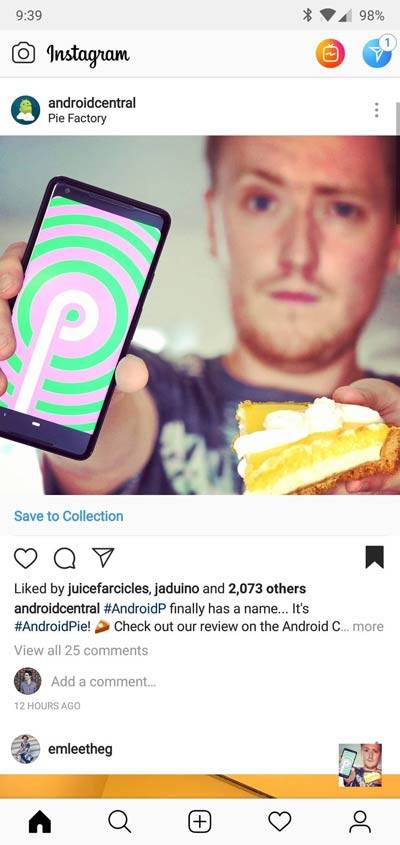 1+ million uploaded photos
1+ million uploaded photos


